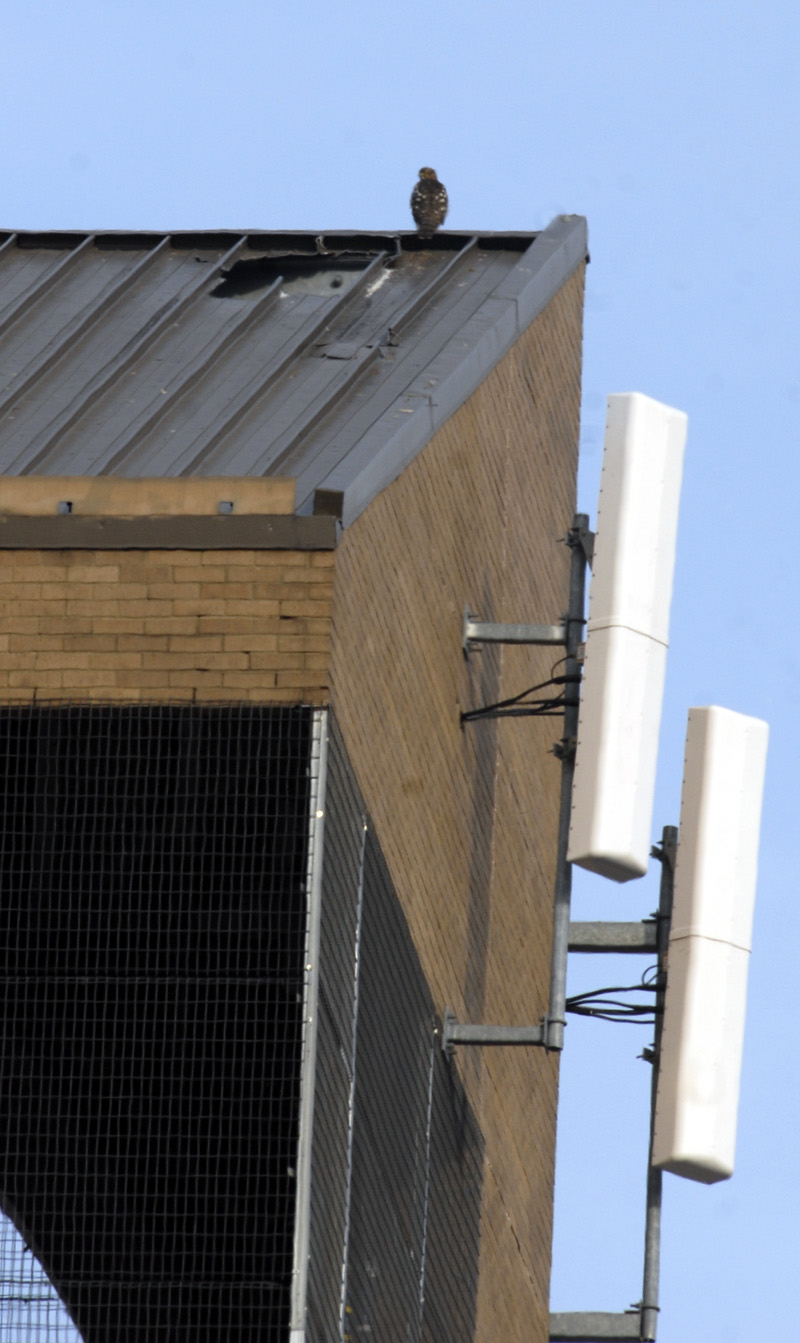Hawk using cell tower as bird buffet
Wildlife advocates fear protected animal will get trapped in netting
For the past few months, the AT&T cell tower downtown has doubled as a bird graveyard.
A heap of nylon netting inside the tower has snarled several birds. So far, the dead birds have been only pigeons – a bird that nature enthusiasts don’t often raise a fuss over.
But now, after dozens of community members have reported at least one hawk lurking inside the stone tower in the 700 block of Vermont Street, the netting is making wildlife advocates nervous that federally protected birds may be at risk of getting snagged as well.
“I have concerns about that,” said Marty Birrell, director of the Prairie Park Nature Center. “Eventually, the hawks will get entangled.”
AT&T officials said they were aware birds were in the tower, but it was never their intention for anything – wildlife or human – to be able to get inside.
The netting, apparently, was left over after the company replaced it with wire that was intended to be more animal-friendly, company spokesman Brett Sayre said Tuesday. The old nylon netting was supposed do be in a Dumpster, not still in the tower.
“We don’t hate animals,” Sayre said. “We’re not trying to do anything that’s going to harm hawks or any other birds.”

A red-Tailed Hawk rests on top of the AT&T cell tower Tuesday morning in the 700 block of Vermont Street. The tower was damaged in the microburst last spring and left holes that pigeons fly in and out of. The hawk has discovered a free and easy meal as pigeons are getting trapped in netting inside the tower.
The structure is typically closed on all sides. But last spring’s microburst blew off a portion of the roof.
When company officials first heard about a hawk near the tower, they called several wildlife agencies. Birrell responded along with Dennis Dinwiddie, director of the Stone Nature Center in Topeka, who last week scaled the tower to search for the birds.
The community feared that at least one hawk was trapped inside the tower. But when Dinwiddie reached the top, he found no live birds.
Instead, he found tiny skeletons throughout the tower. Some, he said, were in the nets.
The hawks, apparently, had seen the pigeons trapped in the nets and had been using the tower as a kind of fly-through restaurant – swooping in, snacking on a bird and flying out.
After climbing back down, Dinwiddie and Birrell told AT&T officials that the nets posed a danger, and should come down.
Sayre said that he’s had conversations with the maintenance director for the building, and that they’ll work to make sure wildlife can’t get into the tower any more.
“We’re working to get it taken care of,” he said. “We’ll do what we need to do to keep animals safe.”
In the meantime, Dinwiddie and Birrell are writing a letter to the company with the recommendation that the nets come down. Most utility companies are quick to act when protected birds are in danger, they said.







